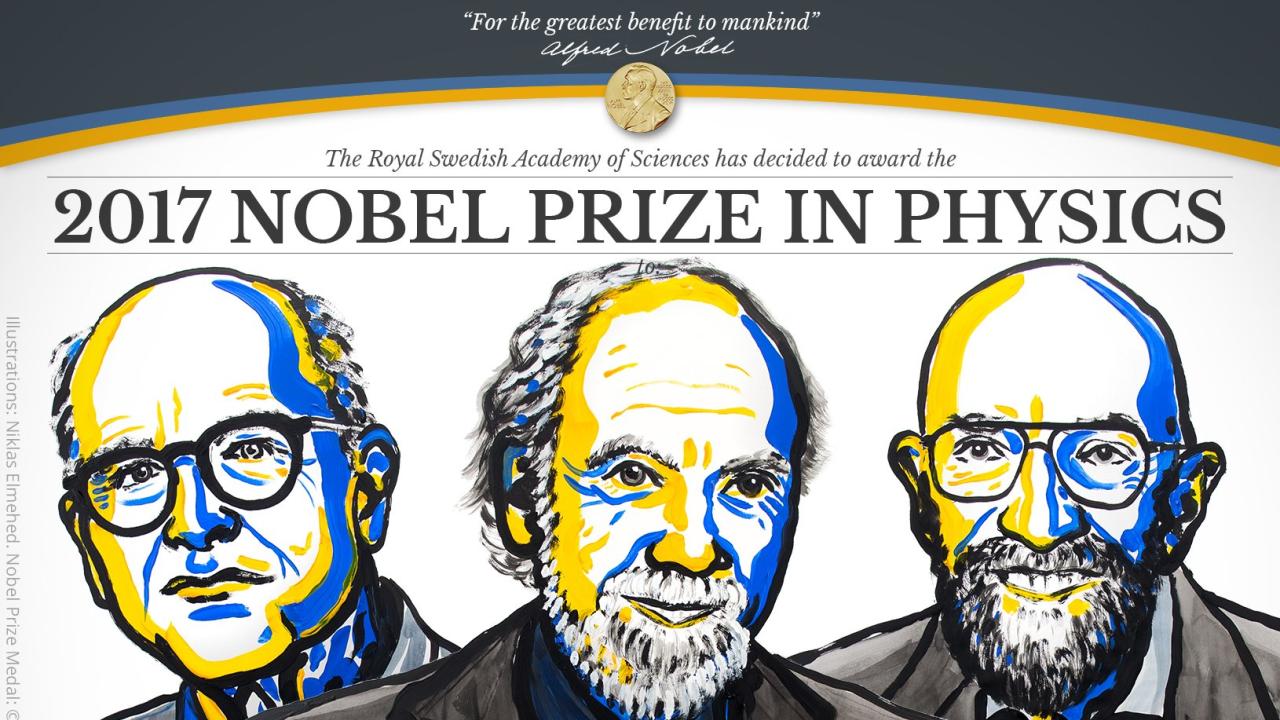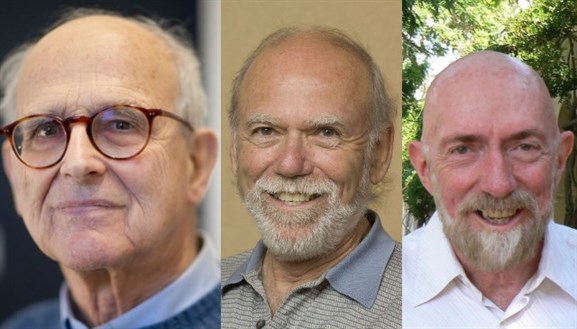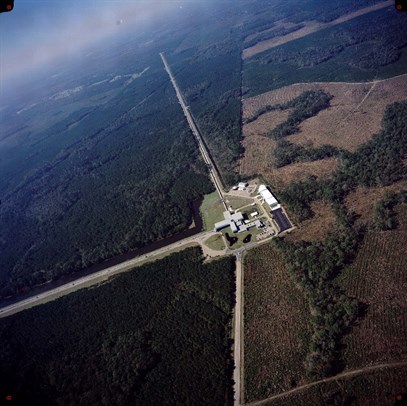
The Royal Swedish Academy of Sciences announced this morning the 2017 Nobel Prize in Physics to Rainer Weiss (MIT), Barry C. Barish (Caltech) and Kip S. Thorne (Caltech) for their “decisive contributions to the LIGO (the Laser Interferometer Gravitational-Wave Observatory) detector and the observation of gravitational waves.”
 |
|
Rainer Weiss, Barry C. Barish, and Kip S. Thorne, Nobel Laureates 2017 (Image credits: Bryce Vickmark, R. Hahn, and Keenan Pepper) |
Pioneers Rainer Weiss and Kip S. Thorne, together with Barry C. Barish, who brought the project to completion, ensured that four decades of effort led to the detection of gravitational waves, first predicted over a century ago by Albert Einstein’s theories. Kip Thorne initiated theoretical efforts on gravitational waves and their sources at Caltech in 1968 and, back then, was already convinced that gravitational wave detection would eventually succeed. He was right.
 |
|
| LIGO laboratory in Lousiana |
The first gravitational wave ever to be detected arrived almost simultaneously at the two LIGO observatories, one situated in Livingston (Louisiana) and the other one 3000 km away, near Washington state, on 14 September 2015.
As Olga Botner from the Nobel committee explained, this was the happy ending of an over 1 billion year-long story. “It all started in a galaxy far, far away where a long time ago two massive black holes engaged in a deadly dance,” she said. “Revolving around each other, spiraling faster and faster, whirling finally at half the velocity of light, they collided and merged forming an even more massive black hole. This momentous event reverberated through space and time as gravitational waves sped outwards carrying information on what had just happened. This event took place about 1.3 billion years ago at a time when the first multicellular life emerged on Earth. Ever since then have the gravitational waves sped through the universe, reaching our cosmic neighborhood, the Magellanic cloud, about 200,000 years ago when early Homo sapiens walked in Africa, and finally swept to Earth on September 14th 2015 when the waves were recorded by perhaps the most sensitive instrument ever devised by man: the LIGO interferometer gravitational wave observatory.”
Credits: PhD Comics
A rumbling noise, and then a chirp. This is the amazing signal everyone is now talking about.
Credits: LIGO http://www.ligo.org/
Nobel Laureate Rainer Weiss recently declared to New Scientist: “I would really have loved to be able to tell Einstein this story and watch his reaction to it.” But Einstein was already gone when, in the early 1960s, the LIGO concept was born to test part of his theory. Nowadays, this large-scale collaborative project relies on the work of over 1000 researchers from more than 100 scientific institutions spread over four continents. The Nobel Laureates 2017 all hold on to this point: “All three wanted to stress the role of the collaboration,” Olga Botner declared.
Weiss, in a phone call to the Royal Swedish Academy of Sciences today, stressed right away that the prize honors the work of the whole collaboration: “I view this more as a thing that recognizes the work of about 1000 people, a really dedicated effort that’s been going on for – I hate to tell you – as long as 40 years.”
Among the numerous LIGO’s collaborators is the ICTP partner institute ICTP-SAIFR (South American Institute for Fundamental Research), founded in 2012 in Sao Paulo, Brazil. In particular, the group led by physicist Riccardo Sturani contributed to LIGO’s major discovery by analyzing data for gravitational signals coming from coalescing objects, but also by analytical and theoretical modeling: “Our group is developing the most accurate models, in order to maximize the detection probability and the physics outcome of a gravitational wave’s detection.”
Since 2015, three other gravitational waves have been detected, the latest one on 14 August at the VIRGO observatory (Italy) along with LIGO. Being able to experimentally detect these signals has been crucial to validate Einstein’s General Relativity theory, but it also provides new tools to investigate the history and the structure of our universe, potential modifications of gravity and much more. “Their repeated detections,” said ICTP-SAIFR physicist Riccardo Sturani, the principal investigator for the LIGO collaboration “could yield new information on astrophysics, fundamental gravity and cosmology.”
---- Anna Lombardi
More information about the first detection of gravitational waves at LIGO can be found in this video by New Scientist.
















